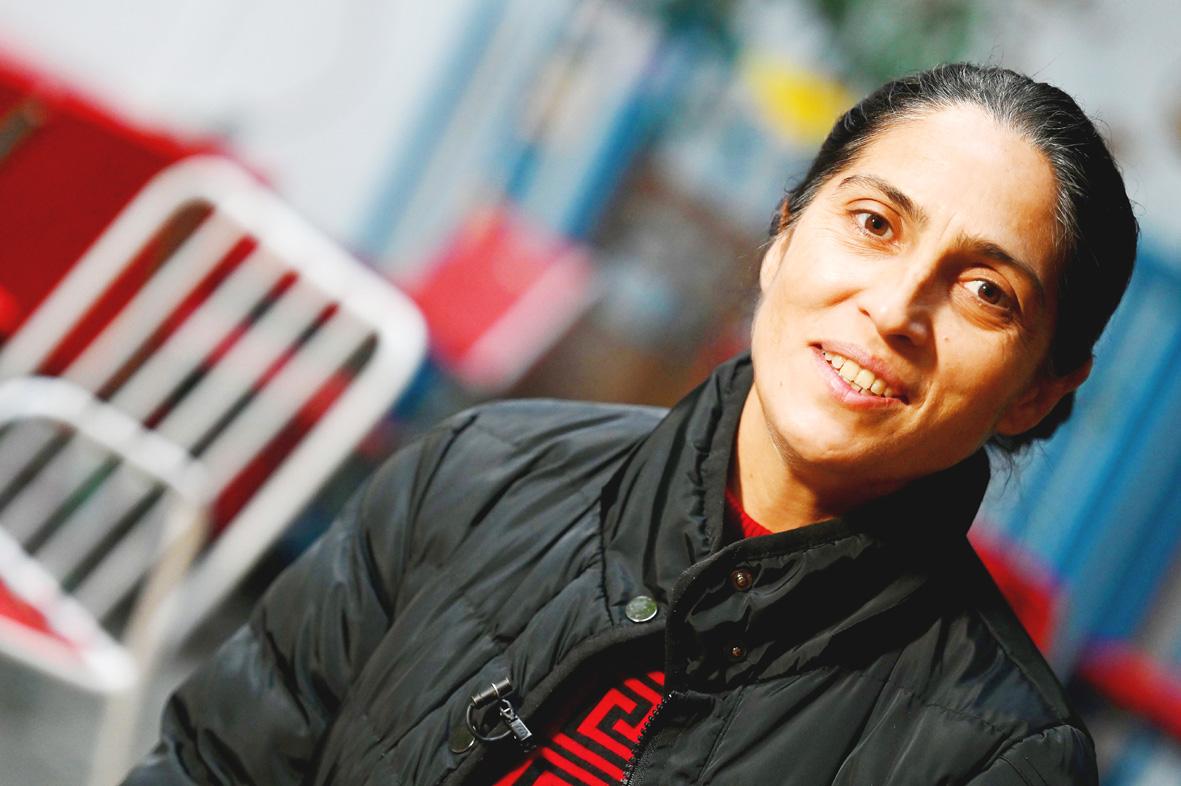Monika Lakatos, a celebrated singer of “Olah Gypsy” music from Hungary, has become the first Romani artist to receive the prestigious World Music Expo (WOMEX) lifetime achievement award.
Soft-spoken but with a passionate singing voice, the 42-year-old hails from the tiny Olah Gypsy community, a branch of the Romani ethnic minority, Hungary’s largest at around seven percent of its population of 9.8 million.
“I am proud to win it as both a Gypsy and a Hungarian,” the diminutive dark-haired singer, said Saturday before she received the award at a WOMEX gala concert in Budapest.

Photo : AFP
Previous winners include Senegalese performer Cheikh Lo and Portuguese fado legend Mariza.
The award was “timely” given the contribution of Romani artists to the world’s musical culture, WOMEX jury member Balazs Weyer said.
Lakatos was recognized for her “outstanding artistry, as well as her social impact and personal dedication to keeping alive the Olah Gypsy tradition,” Weyer said.
“Her pure voice has such an immediate effect, you can see the change in the eyes of people listening,” he said.
The distinctive Olah singing style emphasizes tone and spontaneity, with a repertoire of lyrical “listening” songs and danceable “whirling” ones.
Unlike more widely known strings-based Hungarian Gypsy music, the Olah version uses traditional percussive instruments like water urns, wooden tubs and spoons, as well as a beatbox-like sound called “vocal-bassing.”
“The Olah style is the soul of Gypsy music, it’s a living culture, life weaves the songs together,” Lakatos said.
Olah Gypsies migrated from neighboring Romania in the 19th century and now number only around 30,000 people. Most live in rural northeast Hungary near Nagyecsed, a village 250km east of Budapest.
Traditionally horse traders and traveling salesmen, many Olah Gypsies now struggle with deep poverty.
Within its male-dominated community, Lakatos, born in Budapest but with roots in Nagyecsed, says its members respect traditions like not holding hands or declaring love in public.
“We do that through song and dance instead,” she said.
After learning traditional Olah Gypsy music with cousins and friends as a child, Lakatos won a national TV talent show in 1996 aged 17.
Now she fronts acclaimed ensemble Romengo and performs in a duo with her musician husband Mazsi Rostas.
A mother-of-one, her daughter also occasionally sings in another of her groups Gypsy Voices, which promotes young, mainly female, Olah singing talents.
“It’s important that this musical culture is passed on at home, in case later generations are only able to learn about it from books,” she said.
Lakatos also celebrates what she calls her “dual identity as a Hungarian Gypsy.”
The Romani, often on the receiving end of discrimination, face widespread exclusion from mainstream Hungarian society.
But “our common language of music is a link bringing people together,” she said, adding that festival-goers in Hungary often tell her after concerts that they didn’t know about Olah Gypsy music until seeing her.
“If people don’t know a culture then maybe they can be afraid or suspicious of it,” she noted.

On a hillside overlooking Taichung are the remains of a village that never was. Half-formed houses abandoned by investors are slowly succumbing to the elements. Empty, save for the occasional explorer. Taiwan is full of these places. Factories, malls, hospitals, amusement parks, breweries, housing — all facing an unplanned but inevitable obsolescence. Urbex, short for urban exploration, is the practice of exploring and often photographing abandoned and derelict buildings. Many urban explorers choose not to disclose the locations of the sites, as a way of preserving the structures and preventing vandalism or looting. For artist and professor at NTNU and Taipei

March 10 to March 16 Although it failed to become popular, March of the Black Cats (烏貓進行曲) was the first Taiwanese record to have “pop song” printed on the label. Released in March 1929 under Eagle Records, a subsidiary of the Japanese-owned Columbia Records, the Hoklo (commonly known as Taiwanese) lyrics followed the traditional seven characters per verse of Taiwanese opera, but the instrumentation was Western, performed by Eagle’s in-house orchestra. The singer was entertainer Chiu-chan (秋蟾). In fact, a cover of a Xiamen folk song by Chiu-chan released around the same time, Plum Widow Missing Her Husband (雪梅思君), enjoyed more

Last week Elbridge Colby, US President Donald Trump’s nominee for under secretary of defense for policy, a key advisory position, said in his Senate confirmation hearing that Taiwan defense spending should be 10 percent of GDP “at least something in that ballpark, really focused on their defense.” He added: “So we need to properly incentivize them.” Much commentary focused on the 10 percent figure, and rightly so. Colby is not wrong in one respect — Taiwan does need to spend more. But the steady escalation in the proportion of GDP from 3 percent to 5 percent to 10 percent that advocates

From insomniacs to party-goers, doting couples, tired paramedics and Johannesburg’s golden youth, The Pantry, a petrol station doubling as a gourmet deli, has become unmissable on the nightlife scene of South Africa’s biggest city. Open 24 hours a day, the establishment which opened three years ago is a haven for revelers looking for a midnight snack to sober up after the bars and nightclubs close at 2am or 5am. “Believe me, we see it all here,” sighs a cashier. Before the curtains open on Johannesburg’s infamous party scene, the evening gets off to a gentle start. On a Friday at around 6pm,